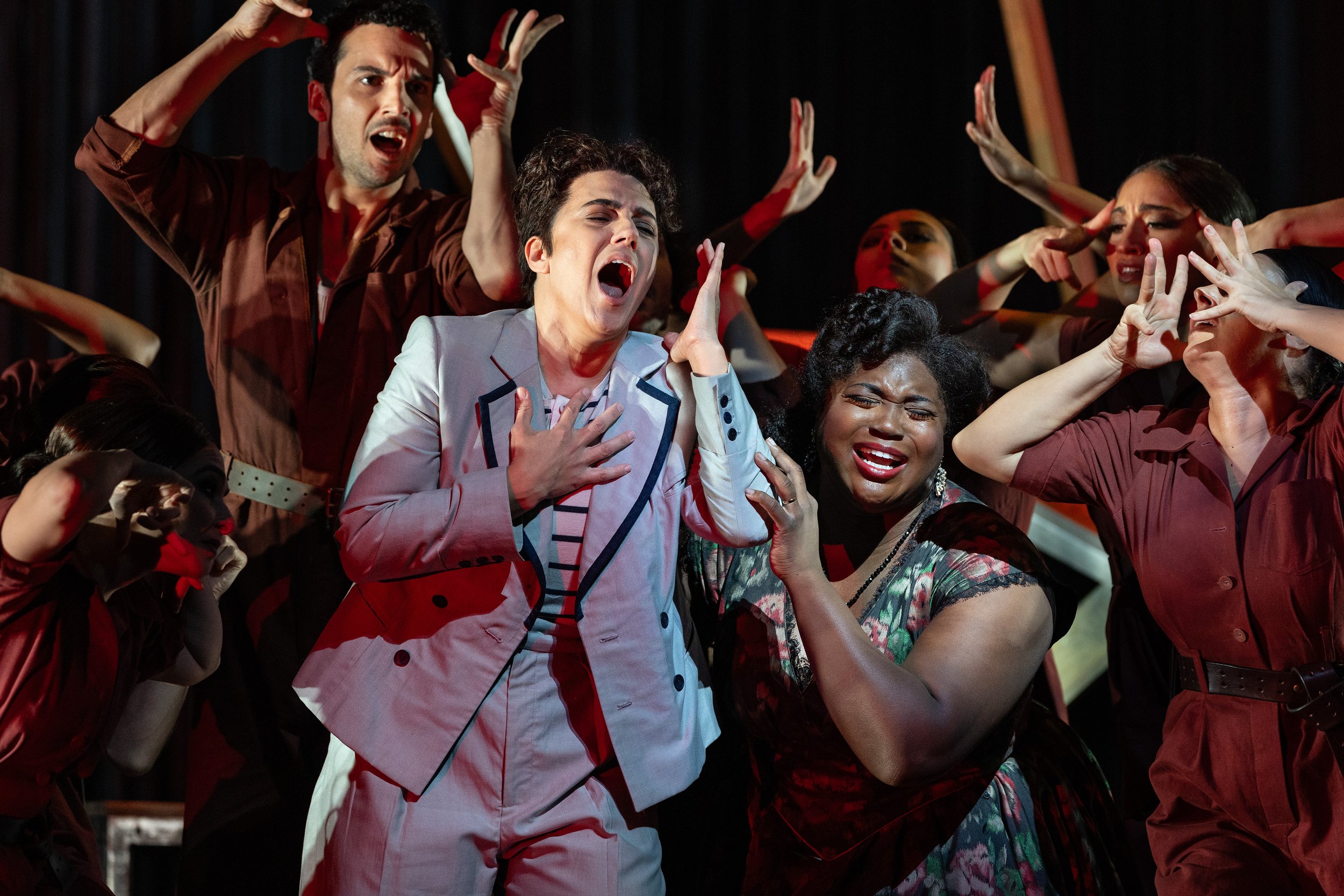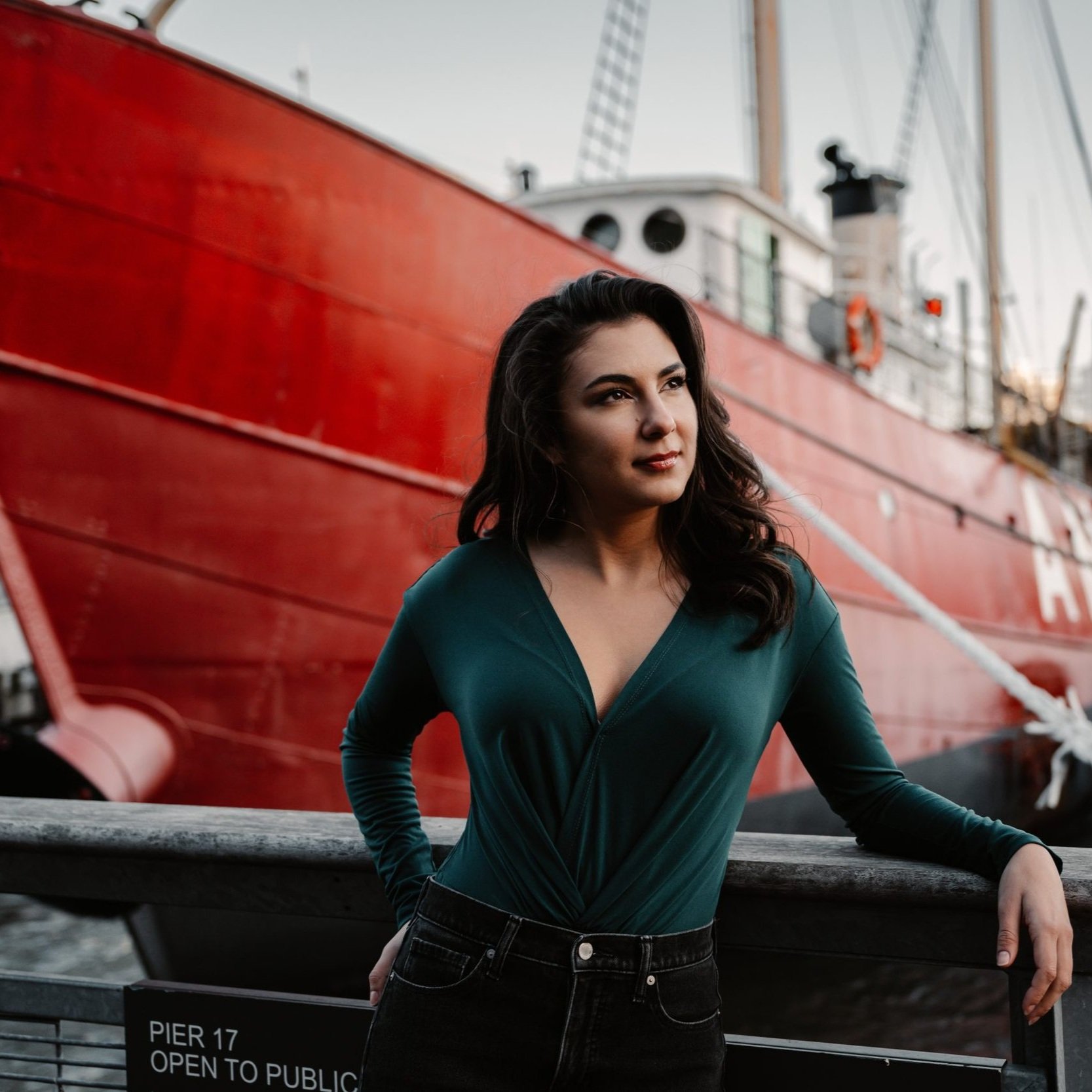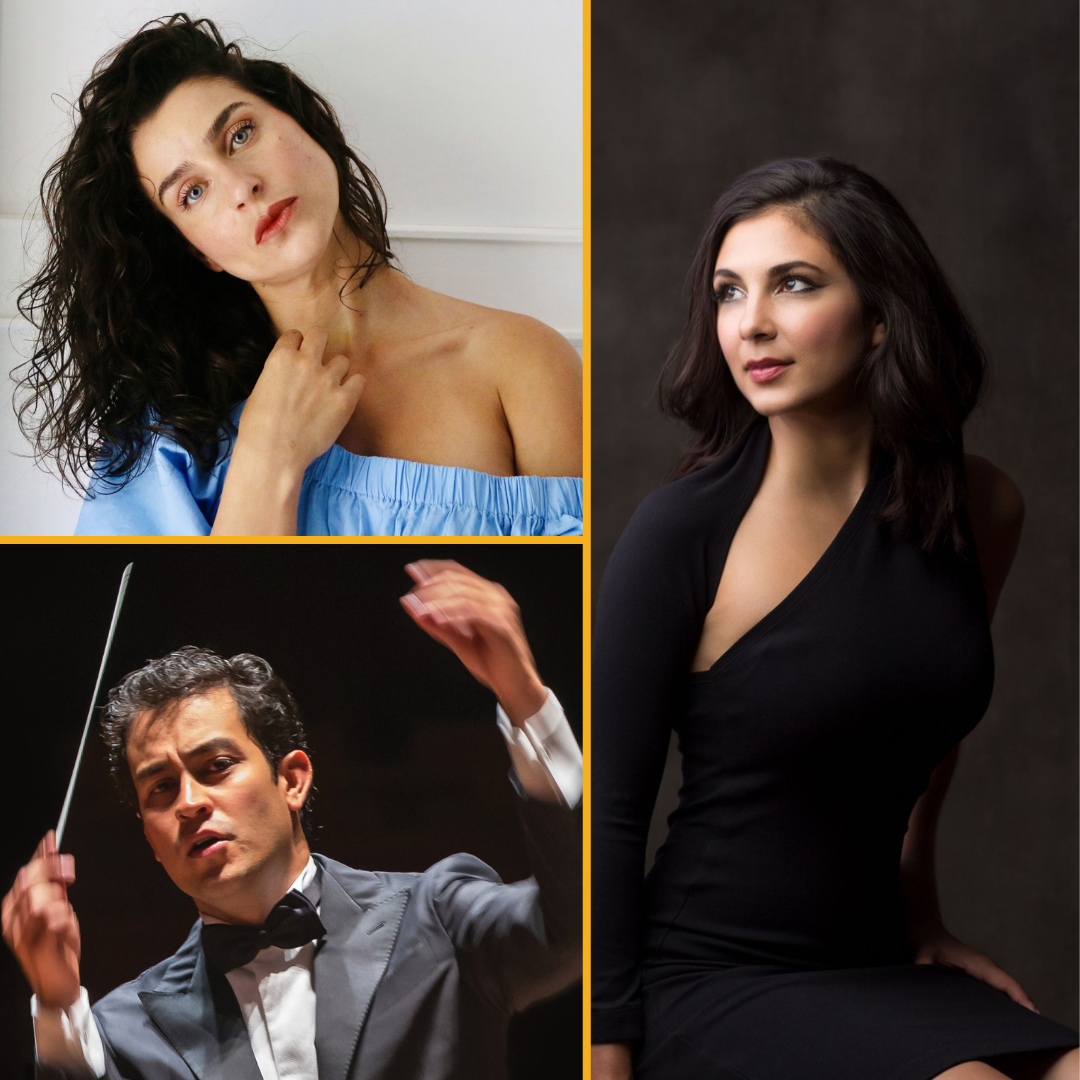Met Opera 2023-24 Review: Orfeo ed Euridice
Ying Fang and Anthony Roth Costanzo in Orfeo ed Euridice (Ken Howard/Met Opera)
The Orpheus and Eurydice myth has probably had more operas made out of it than any other story. For those who don’t know it, the Greek legend goes that Orpheus, the greatest singer in the world, was so stricken by grief after his wife, Eurydice, died of a snake bite shortly after their wedding that he decided to go to the Underworld to get her back, armed only with his lyre and the blessing of the sympathetic gods. Hades, king of the Underworld and god of death, was so moved by Orpheus’s music that he allowed Orpheus to return with Eurydice out of death — on one condition: Orpheus could not look at Eurydice until they arrived in the world of the living. What happened next is debated; some say that he was stricken by doubt as to whether Eurydice was really following behind him and looked to check, while others say that he crossed the threshold into Life and looked joyfully at his wife, who was a few paces behind, still in the passage out of the Underworld. Either way, he looked, and Eurydice died a second death, for good this time.
What makes the myth so appealing to composers old and new? I believe it’s the challenge of writing music for the greatest singer of all time, writing music so lovely as to subvert Death. Ego trip? Perhaps, but the Orpheus myth was essential to opera’s birth; the first surviving opera is Peri’s Euridice, and the earliest opera to keep a place in the repertory is Monteverdi’s L’Orfeo. Glück’s baroque masterpiece Orfeo ed Euridice is the most famous of the Orphic operas, and is performed with some regularity at the Met. Orfeo ed Euridice is one of the very few (if not the only) versions of the story with a happy ending, as Love yet again takes pity on Orfeo’s suffering and has Euridice carried back in in the exact same way she was carried out. Love giveth, and Love taketh away.
Ying Fang in Orfeo ed Euridice (Ken Howard/Met Opera)
I don’t know what my readers think that angels sound like, but I believe they must sound like Chinese soprano Ying Fang. Not only was Euridice’s aria, “Che fiero momento,” the high point of the show, but every note Ying sang, with a voice crystal clear as a freshwater brook in the French Alps, elevated Orfeo ed Euridice to another level. This Euridice deserved to be in the title, and not just because she sang like an angel incarnate, but also because this rose had thorns. Ying’s gorgeous voice doesn’t impede her from excelling at guilting other characters (in this case, so much so that she ends up dying again).
Elena Villalón in Orfeo ed Euridice (Ken Howard/Met Opera)
Elena Villalón, making her Met debut as the god(dess) of love, Amore (or Cupid), was a confident, breezy presence onstage. From the moment she floated down from the heavens in a pink polo shirt, her lovely voice cascading down to earth, the Cuban-American soprano from Austin, Texas brought much-needed levity to the mournful atmosphere created by Orfeo’s pain.
Still, without a good Orpheus, Orfeo ed Euridice is done for. Fortunately, Anthony Roth Costanzo (ARC) provided the solid foundation of the evening’s triumph. The role of Orpheus is effectively an agent of heartache, and ARC not only conveyed Orfeo’s sorrow but drew me into it, especially in Act 1 and the aria “Che farò senza Euridice”. None of the three soloists have especially large voices, but nor do they have any trouble making themselves heard; ARC projected easily into the large auditorium, his sound flying all the way up to Family Circle. As a countertenor, he spends most of his time singing in his head voice, but he also has a strong chest voice.
The dancers of the top-notch Met Opera Ballet are central to the show. Orfeo is a short 90 minutes, and I don’t think there’s singing for more than half of it, so the dancers very much helped lift the show. The choreography was effective, but couldn’t it have been a bit more classical?
Michael Morris’s staging is bare save for a tiered structure where the Chorus sits, costumed as dead historical figures like Maria Callas, Abraham Lincoln, Queen Elizabeth I, and a bearded fellow who might be either Moses, Jesus, or Gandalf the Grey. The Chorus, likewise an integral part of Orfeo ed Euridice, was typically stupendous. This season is chorus conductor Donald Palumbo’s last at the Met. His 17 years there have molded the Chorus into one of the world’s best, and he will be sorely missed.
Anthony Roth Costanzo (center) surrounded by Dancers and, above, Chorus (Ken Howard/Met Opera)
The lighting of a show is an indispensable aspect of theater often forgotten by audiences. James F. Ingalls’s work helped sell Elysium as an ideal resting place with warm golden light (nobody likes white office lights). In Act 3, when Orfeo is on his way out of the Underworld with Euridice, the tiers turn into a black sky speckled with stars, my favorite part of the production. From where I sat, it was easy to tell that there was a hollowed-out passageway where ARC and Ying were standing, but if you look at it straight-on, it’s as if they are walking in the heavens. Since the top of the set prevents traditional spotlights from reaching them, Ingalls cleverly placed bars of light behind the wall of the starry night.
The color of the dancers’ clothes, designed by Isaac Mizrahi, reflected where we were in the story. While Orfeo grieved, they dressed in shades of gray and black; in the Elysian Fields, the blissful departed dressed in ivory-cream; and when Orfeo and Euridice returned from the Underworld in triumph, the dancers were decked out in bright, jolly colors like yellow and purple.
J. David Jackson, on the podium, moved things along at a tidy, even pace, keeping Orfeo’s songs of sorrow from indulging in slowness and the Furies’ frenetic wildness from rushing. The energy of the orchestra was all the more impressive considering that Maestro Jackson was a late replacement for the originally billed Christian Curnyn, and the change was announced only one day before the opening.
Mind if I digress a bit to kvetch? The performance was wonderful, but I have never had an experience like this at a theater. Multiple people near me were either using their phones or snickering. Good grief! I am grateful to the kind usher who took us to different seats.
Orfeo ed Euridice not only finishes its run tomorrow at 1pm, but closes the Met’s entire 2023-24 season. It’s been a ball, and I can’t wait for 2024-25. Enjoy the summer, readers!
P.S. I’ll still be here during the dry season, so you don’t go meshuggah (crazy) with no opera.







